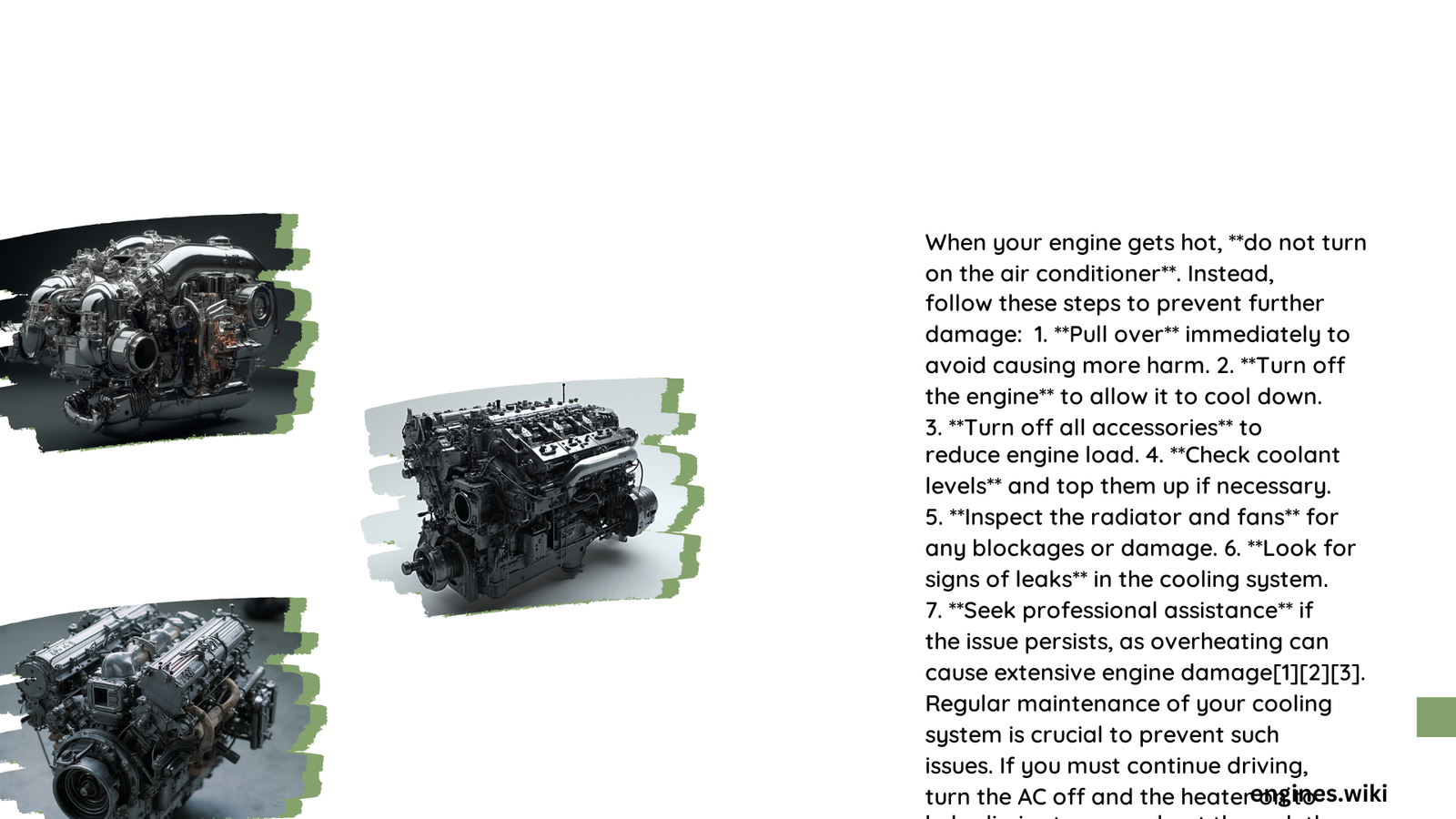When your engine gets hot, turning on your air conditioner might seem counterintuitive, but it can actually help manage engine heat in certain situations. This strategy leverages the car’s cooling system and the air conditioning’s components to potentially alleviate engine stress. However, it’s crucial to understand the mechanisms, optimal settings, and potential risks involved in this approach to ensure it’s used effectively and safely.
Why Does Turning On Your Air Conditioner Help When Your Engine Gets Hot?
The relationship between your car’s engine temperature and air conditioning system is more complex than you might think. Here’s why turning on your AC when your engine gets hot can sometimes be beneficial:
- Heat Absorption: The AC system can absorb some of the engine’s excess heat through its condenser, which is typically located in front of the radiator.
- Fan Activation: When you turn on the AC, it often triggers the cooling fan to run at full speed, which can help cool the engine more effectively.
- ECU Management: Modern cars’ Engine Control Units (ECUs) can adjust various parameters to balance AC operation with engine cooling needs.
How Does the Air Conditioning System Interact with Engine Temperature?

The interaction between your car’s AC system and engine temperature involves several components and processes:
- Condenser Location: The AC condenser is usually positioned in front of the radiator, allowing it to release heat from the refrigerant while also potentially absorbing some engine heat.
- Cooling Fan Operation: The AC system and engine often share cooling fans, which run at higher speeds when the AC is on, benefiting both systems.
- Compressor Load: The AC compressor adds load to the engine, which can initially increase heat production, but modern ECUs manage this effectively.
What Are the Optimal Settings for Using AC to Cool an Overheating Engine?
To use your AC effectively when your engine is running hot, consider these settings and practices:
- Fan Speed: Set the fan to its highest speed to maximize air flow through the system.
- Temperature Setting: Counterintuitively, setting the temperature to its coldest setting can help, as it maximizes the system’s cooling effort.
- Recirculation: Turn off the recirculation feature to bring in fresh, cooler air from outside.
- Regular Intervals: If in heavy traffic, consider cycling the AC on and off at regular intervals to prevent overloading the system.
What Are the Risks of Using AC When Your Engine Is Overheating?
While using the AC can sometimes help with an overheating engine, there are potential risks to be aware of:
- Increased Engine Load: The AC compressor adds load to the engine, which could exacerbate overheating if the cooling system is already compromised.
- Belt Stress: Continuous operation of the AC in high-heat conditions can stress the serpentine belt.
- Refrigerant Pressure: Extremely high engine temperatures can lead to dangerously high refrigerant pressures in the AC system.
How Effective Is This Method in Different Driving Conditions?
The effectiveness of using your AC to help cool an overheating engine can vary depending on the driving conditions:
| Driving Condition | Effectiveness | Reason |
|---|---|---|
| Highway Driving | Moderate | Good airflow helps both AC and engine cooling |
| City Traffic | Low to Moderate | Limited airflow can strain both systems |
| Uphill Driving | Low | High engine load may outweigh AC benefits |
| Idle | Moderate | Fan operation helps, but limited airflow |
What Maintenance Is Required to Ensure This Method Works?
To ensure that using your AC can effectively help with engine cooling when needed, regular maintenance is crucial:
- Coolant System:
- Check coolant levels regularly
- Flush and replace coolant according to manufacturer recommendations
-
Inspect hoses and radiator for leaks or damage
-
AC System:
- Have the AC system checked annually
- Replace the cabin air filter as recommended
-
Monitor refrigerant levels and recharge if necessary
-
Belts and Hoses:
- Inspect the serpentine belt for wear and proper tension
-
Check all hoses for cracks or softness
-
Radiator and Fans:
- Ensure the radiator is clean and unobstructed
- Verify that cooling fans are operating correctly
When Should You Not Use This Method?
While turning on your AC can sometimes help with engine heat management, there are situations where it’s not advisable:
- When the engine is severely overheating (temperature gauge in the red zone)
- If you notice steam coming from under the hood
- When the AC system is malfunctioning or low on refrigerant
- If the serpentine belt is damaged or loose
In these cases, it’s best to pull over safely, turn off the engine, and seek professional assistance.
Remember, while using your AC can sometimes help manage engine heat, it’s not a solution for underlying cooling system problems. If your engine frequently runs hot, it’s essential to have it inspected by a qualified mechanic to address the root cause of the issue.
References:
- The Mechanics Behind Car A/C and Heating – Destin Auto Center
- Link between coolant temp and a/c compressor? – Car Talk Community
- How Do Your Car’s A/C and Heater Work? – Greg’s Japanese Auto
- Understanding Car A/C Systems – CarParts.com
- Car Air Conditioning Service & Repair – Firestone Complete Auto Care
